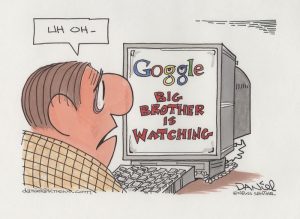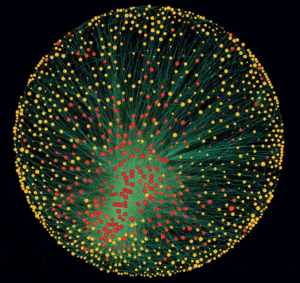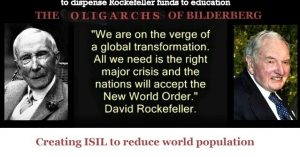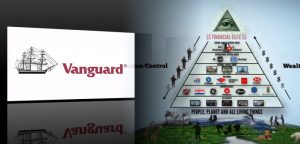Who is who sharing the Covid Pandemic Profit?
Big Brother is Watching You
Who really control the world? Systems analysts say it is a unique effort to untangle control in the global economy. And to find out who those really are; The Illuminati? Freemasons? The Bilderberg Group? Or are these all red herrings to distract your prying eyes from the real  global elite? The answer, like most topics worth exploring, is not quite so simple. Have no doubt, there are secretive global powers whose only goal is to keep and grow that power. But it really may not be as secretive as you’d think. And that’s what makes it even more criminal…
global elite? The answer, like most topics worth exploring, is not quite so simple. Have no doubt, there are secretive global powers whose only goal is to keep and grow that power. But it really may not be as secretive as you’d think. And that’s what makes it even more criminal…
“Facts do not cease to exist because they are ignored.”
Aldous Huxley
And, Henry Ford once quipped;
“It is well enough that people of the nation do not understand our banking and money system, for if they did, I believe there would be a revolution before tomorrow morning.”
Every major geopolitical decision of the last five decades has been run through one of these four organizations: the Bilderberg Group, the Trilateral Commission, the Council on Foreign Relations and the World Bank/International Monetary Fund (IMF).
While the Trilateral Commission excludes anyone currently holding public office from membership, the – global who’s-who of power brokers – serves as a revolving door of the rich and powerful from the financial, political and academic elite.
For the Financial Elite follow the money – Systems theorist James B. Glattfelder sheds light on the dark corners of bank control and international finance with his scientific process analysis and pulls some of the major players out of the dark.
“From a massive database of 37 million companies, Glattfelder pulled out the 43,060 transnational corporations – companies that operate in more than one country – that are all connected by their shareholders. Digging further, he constructed a model that actually displays just how connected these companies are to one another through their ownership of shares and corresponding operating revenues.”
 Only 1318 transnational corporations form the core of the economy. In attached graphic, the Super connected companies are red, very connected companies are yellow. The size of the dot represents revenue.
Only 1318 transnational corporations form the core of the economy. In attached graphic, the Super connected companies are red, very connected companies are yellow. The size of the dot represents revenue.
Above image is a chilling one that looks like some sort of intergalactic light globe. Glattfelder has done a remarkable job of boiling these connections down to the main actors — as well as pinpointing how much power they have over the global market. These “ownership networks” can reveal who the key players are, how they are organised, and exactly how interconnected these powers are. From New Scientist:
“Each of the 1318 had ties to two or more other companies, and on average they were connected to 20. What’s more, although they represent 20 per cent of global operating revenues, the 1318 appear to collectively own through their shares the majority of the world’s large blue chip and manufacturing firms — which is the “real” economy — that represents a further 60 per cent of global revenues (GDP).
When the team further untangled the web of ownership, it found much of it tracked back to a “super-entity” of 147 even more tightly knit companies — all of their ownership was held by other members of the super-entity — that control 40 per cent of the total wealth in the network. According to his data, Glattfelder found that the top 730 shareholders control a whopping 80% of the entire revenue of transnational corporations.
And — surprise, surprise! — They are mostly financial institutions in the United States and the United Kingdom. That is a huge amount of concentrated control in a small number of hands…
Here are the top ten transnational companies that hold the most control over the global economy – and if you are one of the millions that are convinced Big Banks run the world, you should get a creeping sense of justification from this list:
- Barclays plc.
- Capital Group Companies Inc.
- FMR Corporation
- AXA
- State Street Corporation
- JPMorgan Chase & Co.
- Legal & General Group plc.
- Vanguard Group Inc.
- UBS AG
- Merrill Lynch & Co Inc.
Some of the other usual suspects round out the top 25, including JP Morgan, Credit Suisse, and Goldman Sachs. What you won’t find are ExxonMobil, Microsoft, or General Electric, which is strange. In fact, only China Petrochemical Group Company at number 50 is the first company in the row that creates something.
The top 49 corporations are financial institutions, banks, and insurance companies — with the exception of Wal-Mart, which ranks at number 15… The rest essentially just push money around to one another. The interconnectedness of the top players in this international scheme, are:
The number one player is Barclays: “Barclays was a main player in the LIBOR manipulation scandal, and were found to have committed fraud and collusion with other interconnected big banks. They were fined $200 million by the Commodity Futures Trading Commission, $160 million by the United States Department of Justice and £59.5 million by the Financial Services Authority for “attempted manipulation” of the Libor and Euribor rates. Despite their crimes, Barclays still paid $61,781,950 in bonuses over that same year, including a whopping $27,371,750 to investment banking head Rich Ricci. And yes, that’s actually his real name…”
 These are the guys that run the world. “It’s essentially the “too big to fail” argument laid out in a scientific setting — only instead of just the U.S. and U.K. banks, we are talking about an international cabal of banks and financial institutions so intertwined that they pose a serious threat to global economics.” Effectively, instead of “too big to fail,” these are “too connected to fail”…
These are the guys that run the world. “It’s essentially the “too big to fail” argument laid out in a scientific setting — only instead of just the U.S. and U.K. banks, we are talking about an international cabal of banks and financial institutions so intertwined that they pose a serious threat to global economics.” Effectively, instead of “too big to fail,” these are “too connected to fail”…
If this information is linked with the ones behind the fake Covid Pandemic specifically Big Pharma involvement, it is getting even more weird;
Who is Who that Share the Covid Pandemic Profit?
A French FWC-reader searched for who is who of shareholders it was found that the main shareholder of Pfizer is Vanguard Group, as listed above in the top 10 league.
The main shareholder of Johnson & Johnson is Vanguard Group
AstraZeneca’s 3rd shareholder is Vanguard Group.
Moderna ’s 4th largest shareholder is Vanguard Group.
The third largest shareholder of Sanofi is Vanguard Group. The 1st shareholder is L’Oréal, but the 3rd shareholder of L’Oréal is Vanguard Group.
Vanguard Group is an American pension fund. It manages about $ 7 trillion, more than the GDP of France and Germany combined. At the international lobby level, it should have great influence..
And then the supporters of the lobby are:
Google with YouTube, Google maps, WhatsApp, etc. with their main shareholder Vanguard Group.
The first shareholder of Facebook is Vanguard Group.
Microsoft’s largest shareholder is Vanguard Group.
Apple’s largest shareholder is Vanguard Group.
Vanguard Group is only the 2nd shareholder from Amazon. Basically, GAFAM is the one. So at the lobby level to sell us something, no doubt that is very, very powerful.
GAFAM is the acronym used to refer to American tech giants Google, Apple, Facebook, Amazon and Microsoft. Together, they hold five of the six top spots in a listing of the world’s most valuable public corporations.
And then, Akamai is the largest shareholder in the Vanguard Group.
Akamai is the world’s largest digital data storage company. It is this company that, together with the national printing office, the data stores of the entire anti-Covid operation and thus also manages the data of the QR code used at all points where it is applied, including the sanitary pass.
Further to make people ill, here are some other supporters for that job;
 MacDonald’s first shareholder is Vanguard Group.
MacDonald’s first shareholder is Vanguard Group.
The first shareholder of Coca-Cola is Vanguard Group.
Disney’s largest shareholder is Vanguard Group.
And finally the icing on the cake;
The first shareholder of Philip Morris is Vanguard Group.
Philip Morris is the world’s largest tobacco manufacturer. Tobacco kills 8 million people a year with state endorsement. And in countries where it can, its prime target is children. Ironically, one of Pfizer’s most cost-effective drugs is Champix, a smoking cessation drug …
What is the risk associated with Champix? The most common side-effects with Champix, seen in more than 1 patient in 10, are nausea (feeling sick), insomnia (difficulty sleeping), abnormal dreams, headache and nasopharyngitis (inflammation of the nose and throat).
The health or vaccination pass with 3 doses at € 19.50 in 6 months for 50 million French people, makes $ 2.975 billion, just for France, for above listed pharmaceutical companies and therefore indirectly for Vanguard Group aided for by Google, Facebook and Phillip Morris.
Do some homework; and find out who are the main shareholders of Vanguard Group?
January 23, 2022 at 8:04 AM
Well done!
And by the way:
Mark Zuckerberg ist the grandson of David Rockefeller.
Bill Clinton is the illegitimate son of Winthrop Rockefeller and the real Bush surname is Scherff; they are Jews from Germany.
George H. Scherff Jr. was known as G.H.W. Bush, the 41st President of the USA.
(Source: Google-search)
Last but not least:
“Corona” means not only a crown but also the aureole, which is another word for the Sun’s golden rays.
“Delta” is the forth letter of the Greek alphabet and has the form of a triangle.
“Omikron” is the 15th letter of the Greek alphabet and is derived from the Phoenician letter “ayn” meaning an eye.
Now, if you put the eye in the triangle and both in the middle of a corona, what symbol will be the outcome?
🤫
January 23, 2022 at 10:03 AM
….ce sont de véritables malades et souhaitons leur le plus grand mal !!
January 23, 2022 at 11:17 AM
Awesome breakdown!
January 23, 2022 at 11:32 AM
translated
They are truly sick and we wish them the best of luck!
January 23, 2022 at 2:37 PM
Thank you, Peter. I’ve known you from your book ‘The great awakening I & II’, which is the best and brightest book of all. AML from S. Korea.
January 23, 2022 at 2:43 PM
Thanks
January 24, 2022 at 5:21 AM
You still haven’t reached who is on top!
January 24, 2022 at 11:38 AM
Sorry, apparently you haven’t ead too mnay articles on FWC. The top is the Octopus and have been eliminated in January 2021 last year. Read more about here https://finalwakeupcall.info/en/?s=Octopus
February 1, 2022 at 1:24 AM
you forgot Blackrock, the real shareholder of all these companies is Blackrock whose main shareholder is Vanguard.
Blackrock : public firm therefore we know who owns what
Vanguard: private, therefore it’s hidden
but, rothschilds, windsor, & co for sure
February 1, 2022 at 11:06 AM
Thanks for your addition…